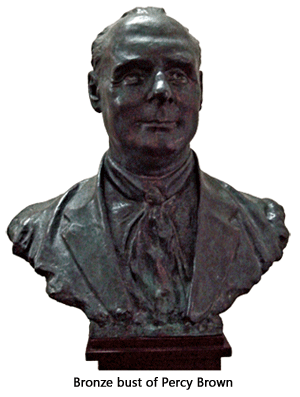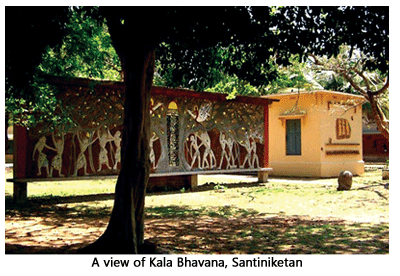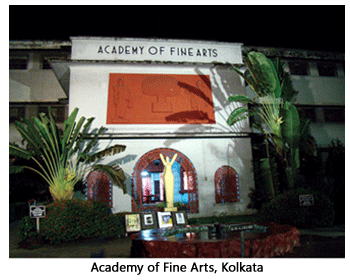- Prelude
- Editorial
- Subodh's 'return home'
- A Conversation with TV Santosh
- It's a War Out There
- Raqib Shaw
- Illusions in Red from a very British Indian Sculptor
- Stand Alone: Shibu Natesan
- Reading Atul Dodiya
- Bharti Kher: An Obsession for Bindis
- Bose Krishnamachari
- The Image - Spectacle and the Self
- From Self-depiction to Self-reference: Contemporary Indian Art
- GenNext: The Epitome of New Generation Art
- Kolkata's Contemporary Art A Look in the Mirror
- Innovation Coalesced with Continuing Chinese Qualities
- Kala Bhavana-Charukala Anushad Exchange Program
- Montblanc Fountain Pens
- Dutch Designs: The Queen Anne Style
- Bangalore Dance Beat
- Decade of change
- Distance Between Art & It's Connoisseur
- What Happened and What's Forthcoming
- 3rd India Art Summit
- New Paradigms of the Global Language of Art
- Black Brown & The Blue: Shuvaprasanna
- Art Events Kolkata
- Musings from Chennai
- Art Bengaluru
- Printmaker's Season
- Mumbai Art Sighting
- The Pause of Profound Stillness
- Previews
- In the News
- The Rebel Queen: An icon of her own times yet looked down upon
ART news & views
Kolkata's Contemporary Art A Look in the Mirror
Volume: 3 Issue No: 14 Month: 3 Year: 2011
by Sunanda K Sanyal
A couple of years ago, during one of my frequent visits to Kolkata, a well-known artists' group in the city invited me to one of its weekly meetings. I was requested to propose a topic for discussion, so I suggested a conversation about the lack of experimental drive in Kolkata's contemporary art. The reaction of the members of the group, some of whom I have known for decades, was almost shocking. Desperately defensive, irate arguments poured out all evening. They ranged from the insistence that what I saw as banal and repetitive in Kolkata's art was actually a sort of regional uniqueness, to the veiled accusation that I was trying to sell a “Western” viewpoint.  After that evening, the name of the group, which symbolizes openness and tolerance, obviously seemed to me ironic.
After that evening, the name of the group, which symbolizes openness and tolerance, obviously seemed to me ironic.
When I was an art school student in Kolkata thirty years ago, two myths were especially influential in our circle. We were told that while Kolkata artists valued local traditions (unclear what they specifically were) and foundational training (which translated as a sort of dated academic realist skill), Delhi and Mumbai artists were “Westernized” (meaning they weren't skilled enough). The other one was a metaphorical phrase in Bengali: kobjir jor (power of the wrist), which we always used to describe one's artistic prowess, inadvertently implying that the hand's role in art-making was more crucial than the mind's. The baffling reality is that both of these ludicrous notions are still very much in vogue among art students in Kolkata. What is more, such naiveté, I believe, is far more typical of the city's visual arts than of any other enterprise on the culture front. There is no earth-shaking revolution in Kolkata's contemporary film, theater, music or literature; but at least the younger practitioners in those fields have an adventurous edge. They are willing to challenge normativity to explore new possibilities. In sharp contrast, much of the contemporary art shown in the city refuses to take what one observer calls the necessary “transgressive leaps”.¹ Incapable of responding to changing times, it keeps on emulating an overused, largely obsolete Modernist paradigm.
Once upon a time – about a century ago – the advanced thinking and intrepid experiments of Kolkata artists had a leading role in the nation's cultural discourse. As Partha Mitter chronicles, the then Government Art School, under the leadership of Percy Brown, was a vibrant hub of pioneering creative efforts. Anxious to define their cultural identity, followers of the Bengal School and its dissidents alike were actively engaged in a critical dialog.² The history of their rivalry with the Bombay Art Society in competing for government grants offers valuable insights into the dynamics of the national art scene of the time, while their eager inquiry of European Modernism in an era of limited international communication testifies to their openness and intellectual curiosity. Much of that zeal for knowledge bred in Kolkata later went on to enrich the eminent art school of Kala Bhavana at Santiniketan,  which, to this day, has lived up to its reputation.
which, to this day, has lived up to its reputation.
Following India's independence, Kolkata continued to play a key role in the shaping of a modern art for two more generations. The Calcutta Group, founded in 1943, worked toward forging a modern pictorial language by critically examining syncretic possibilities of Western and indigenous legacies. Distancing themselves from both trendy emulation of European art and what by then had become the obsolete nativism of the Bengal School, these artists treaded an exciting, if difficult, creative path. Along with their peers in Mumbai and other cities, they made seminal contributions to the complicated cultural engineering of a young nation fraught with myriad problems. They were succeeded by the generation that came of age in the 1950s. These younger artists inherited the task of farther diversifying the scope of modern Indian art through a deeper introspection and closer scrutiny of their cultural identity across the watershed political events of the next three decades. It is since the 1990s, with the gradual passing of both generations, that Kolkata's art scene has become increasingly dull and repetitive.
Except for the work of a handful of artists, the current art of Kolkata has roughly three noticeable trends. The first two are grounded in a kind of clichéd nostalgia. One, particularly evident in printmaking, has an unflinching commitment to formalism. It mimics the stylistic, formal, and iconographic legacies of the earlier generations to the point of sheer banality. Another is a stubborn allegiance to a vague notion of “tradition”, offering everything from tiresome rural landscapes to an endless array of stylized figurative narratives on folkloric and mythological subjects. Conceptually, most images in this second trend are startlingly naïve in their implicit assumption that it is possible for a contemporary urban artist to transcend such obvious mediating agencies as class, gender, and social position and reach out to indigenous traditions for inspiration. Finally, there are the frantic attempts to be “global”. Art of this kind offers generic existential statements framed by superficial references to such Western trends as Pop, Photorealism and Conceptual art. All these types, however, have no dearth of skill – at least in the narrow sense (kobjir jor) in which skill has long been interpreted in Kolkata. But it is just that: demonstration of skill to the point of its fetishization. What they woefully lack is critical thinking; informed attempts to examine contemporary life, art history, and one's place in it as an artist.
One cannot discuss Kolkata's art culture without referring to its abundance of artists' groups.  In its obsession with the past, this is perhaps one area in which Kolkata can claim leadership position among the Indian urban centers. A group fundamentally implies sharing of some kind. In a bygone era, artists in a given culture shared beliefs in utopian visions of humanity, and in the power of art to articulate those beliefs. So the avant-garde founded groups on ideological grounds, often declaring specific agendas and creative projects in manifestos. The Kolkata groups formed in the colonial and early post-colonial periods in search of a common cultural identity were perfectly relevant in this regard. But one could effectively argue that in the decentered, fragmented art world of today, where isms and style movements have all been exhausted, such ideological bonding among artists is no longer feasible; except perhaps among activist artists who function outside the mainstream art world. Yet the specter lives on in Kolkata, where it seems customary for every other young artist to found or join a group of peers immediately after leaving school. Other than a few workshops and irregularly published amateur newsletters here and there, the functions and purposes of most such groups remain quite unclear. Cost sharing of exhibitions, which appears to be their commonest denominator, is indeed no minor issue for ill-funded artists; but in light of the history of the avant-garde, this factor alone can barely justify a group's existence as a platform for artistic solidarity.
In its obsession with the past, this is perhaps one area in which Kolkata can claim leadership position among the Indian urban centers. A group fundamentally implies sharing of some kind. In a bygone era, artists in a given culture shared beliefs in utopian visions of humanity, and in the power of art to articulate those beliefs. So the avant-garde founded groups on ideological grounds, often declaring specific agendas and creative projects in manifestos. The Kolkata groups formed in the colonial and early post-colonial periods in search of a common cultural identity were perfectly relevant in this regard. But one could effectively argue that in the decentered, fragmented art world of today, where isms and style movements have all been exhausted, such ideological bonding among artists is no longer feasible; except perhaps among activist artists who function outside the mainstream art world. Yet the specter lives on in Kolkata, where it seems customary for every other young artist to found or join a group of peers immediately after leaving school. Other than a few workshops and irregularly published amateur newsletters here and there, the functions and purposes of most such groups remain quite unclear. Cost sharing of exhibitions, which appears to be their commonest denominator, is indeed no minor issue for ill-funded artists; but in light of the history of the avant-garde, this factor alone can barely justify a group's existence as a platform for artistic solidarity.
One could examine a number of issues to answer the question as to why contemporary art in Kolkata is so resistant to risk-taking and change, and the ensuing discussion would certainly be complex and enlightening. But here I briefly touch on only three more or less interconnected factors that I believe have vital roles in the present scenario.

The most crucial is the current state of art training in Kolkata. As all good educators know, the curriculum of any program must be re-examined periodically to make it compatible with contemporary needs. In this regard, antiquated would be an understatement in characterizing the content and mode of training in the well-known art institutions in the city. The department called “Indian Style Painting” at the premier institution is a case in point. Once founded as a significant step in an identity discourse in colonial Kolkata, it has long outlived its relevance; each of the three words of its title could now be deconstructed for the tentativeness of its connotation. Nonetheless, still functioning as a rusty relic, this wing of the college continues to impart to its students embarrassingly misleading notions of tradition and authenticity.
The annual exhibitions of student work at Kolkata's art schools currently offer little more than hollow demonstrations of skill, since there is hardly any room for developing a sound conceptual framework at these institutions. The occasional experimental attempts – most often motivated by chance encounters with unfamiliar ideas on the Internet – inevitably suffer from lack of proper guidance. There was a time when two of the schools had a five-year Diploma. Without any training in the history and theory of art, it was rightfully criticized as inadequate education for future artists. Yet ironically, now that both of them confer a Degree, the average standard of theoretical knowledge of their students seems to have plummeted. No question, the content and method of art history teaching and the competence of some of those who teach it are partly responsible for this; but equally instrumental are other instructional strategies. For one thing, the culture of regular critiques of student work is non-existent, and student exposure to multiple views is unheard of. When was the last time when any of these art schools organized a national, regional, or even a local symposium or a seminar on contemporary art? Or when was a newsletter or a journal of student work and writing published to encourage participation? Understandably, then, disagreements and debates are deemed threatening during training, making the already uninformed students all the more insecure as future professionals. It is quite revealing that nowadays if I come across a young Kolkata artist who demonstrates a sophisticated knowledge base and innovative thinking, s/he almost invariably turns out to be someone exposed to the world beyond the city – to the pedagogy of Kala Bhavana, at least.
The fallout of such deficient institutional training is compounded by the absence of a strong art-critical discourse in the arena outside the school. Kolkata has no shortage of erudite critics whose occasional flashes of brilliance have enlightened the art public; yet art writing these days seems almost exclusively confined to reviews of exhibitions and hagiographic profiles of individual artists. Thus, far from appreciating the importance of the dialog between artists and critics that has always been indispensible to discourses of modern art, a young artist in Kolkata has no option but to see the critic as an ally, an adversary, or an altogether expendable appendage to the art community. And here again is the failure of the art schools to exploit the expertise of the local critics through discussions and debates that would expose students to the complexities of contemporary art. Grants and artist residencies worldwide now frequently require artists to give talks; so one crucial task of an artist today is to be able to present her/his work before an audience.  While exposure to presentations of others is indispensible to the shaping of such a skill, a young artist in Kolkata is sadly deprived of that learning experience.
While exposure to presentations of others is indispensible to the shaping of such a skill, a young artist in Kolkata is sadly deprived of that learning experience.
Finally, the role of the art market and exhibition system in the making of tastes – for better or for worse – has been integral to the history of modern art. Until the 1980s, the art market of Kolkata seriously lagged behind that of Delhi and Mumbai, which was indeed reflective of the general dynamic of West Bengal's economy. Other than the two quasi-professional spaces – The Academy of Fine Arts and the Birla Academy of Art and Culture – there were very few exhibition venues in the city. But numerous galleries have popped up since the mid-1990s, and the market, though still relatively mild in the national scene, is now certainly more active. This change has come as a double-edged sword. On the one hand, a handful of the private galleries have been trying to produce a critical culture of contemporary art by broadening the horizon of exhibitions, sponsoring experimental projects, organizing workshops and seminars, and publishing magazines. Though often fledgling in conception and execution, such endeavors are indeed commendable for their effort to fill a vacuum. On the other hand, the majority of the galleries seem to play it safe. Their promotion of either a repetitive and retrograde art or trendy emulation of Occidental ideas resists the possibility of any significant change in the intellectual climate of the city. This, however, is not unusual with the gallery system anywhere, as the market always has multiple motives. It can actually be conducive to the formation of a meaningful cultural discourse, as long as the educational institutions and the intelligentsia are willing to be actively forward-looking. Needless to say, this has yet to happen in Kolkata.
“What Bengal thinks today, India thinks tomorrow”, remarked an iconic national leader almost a century ago. In light of the politics and culture of colonial India, the statement indeed had some truth in it. But ever since we received such an unequivocal vindication of Bengali progressivism from a non-Bengali activist, we as a culture have made a narcissistic cult out of it. Addicted to our self-congratulatory euphoria, we have failed to notice when that proud claim turned tragically hollow. Unfortunately, Kolkata's contemporary art is one of the spaces where this complacency is glaringly evident. Yet there are many promising young artists trained in Kolkata who are anxious to get out of this box. They have the enthusiasm to think freely and learn through failures. In order for them to realize their potentials, the schools ought to take notice of the contemporary world, and then have a hard look at their philosophies and goals; the numerous artists' groups ought to engage in a more tolerant, ego-free dialog; and the art writers ought to delve under the surface for more critical reflections. The initial task, in other words, is to take a look in the mirror.
----------------------------------------------------------------------------------------
The author is Associate Professor of Art History and Critical Studies at the Art Institute of Boston at Lesley University.
----------------------------------------------------------------------------------------
1 Maity, Oindrilla. “Kolkata Now”, Art & Deal, 5(4), no.26: 111.
2 Mitter, Partha. The Triumph of Modernism: India's Artists and the Avant-Garde, 1922-1947. London: Reaktion Books, c2007.